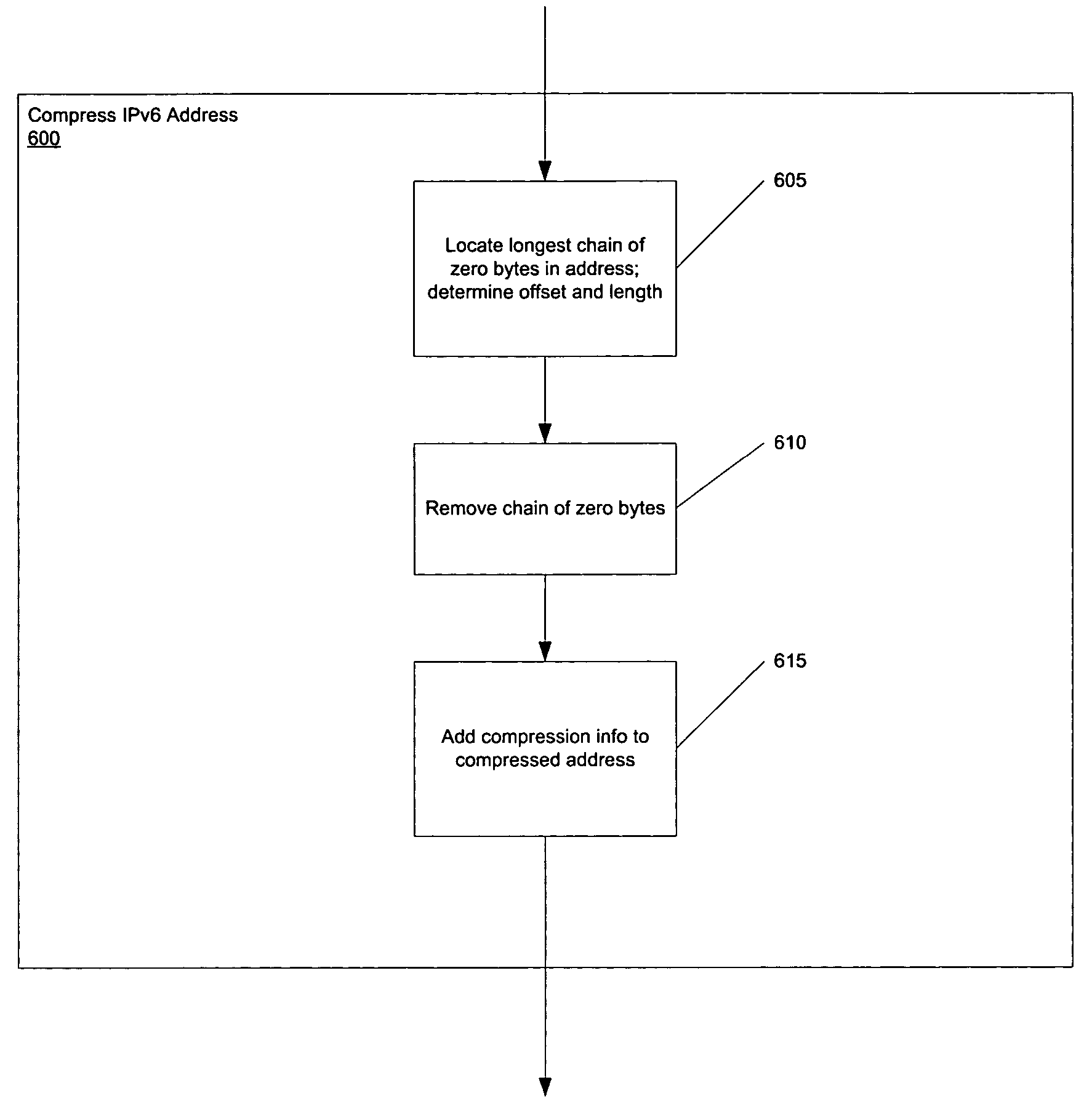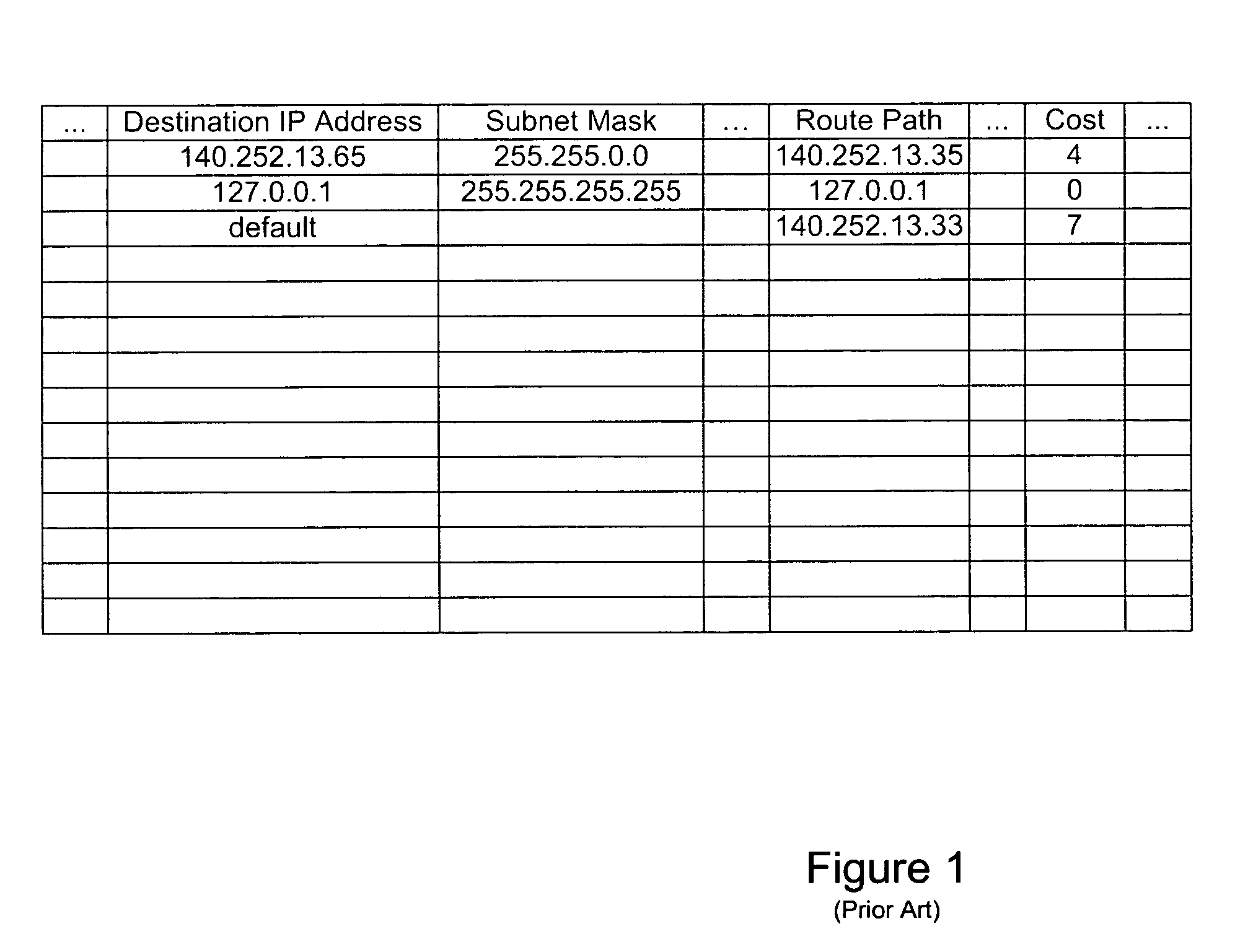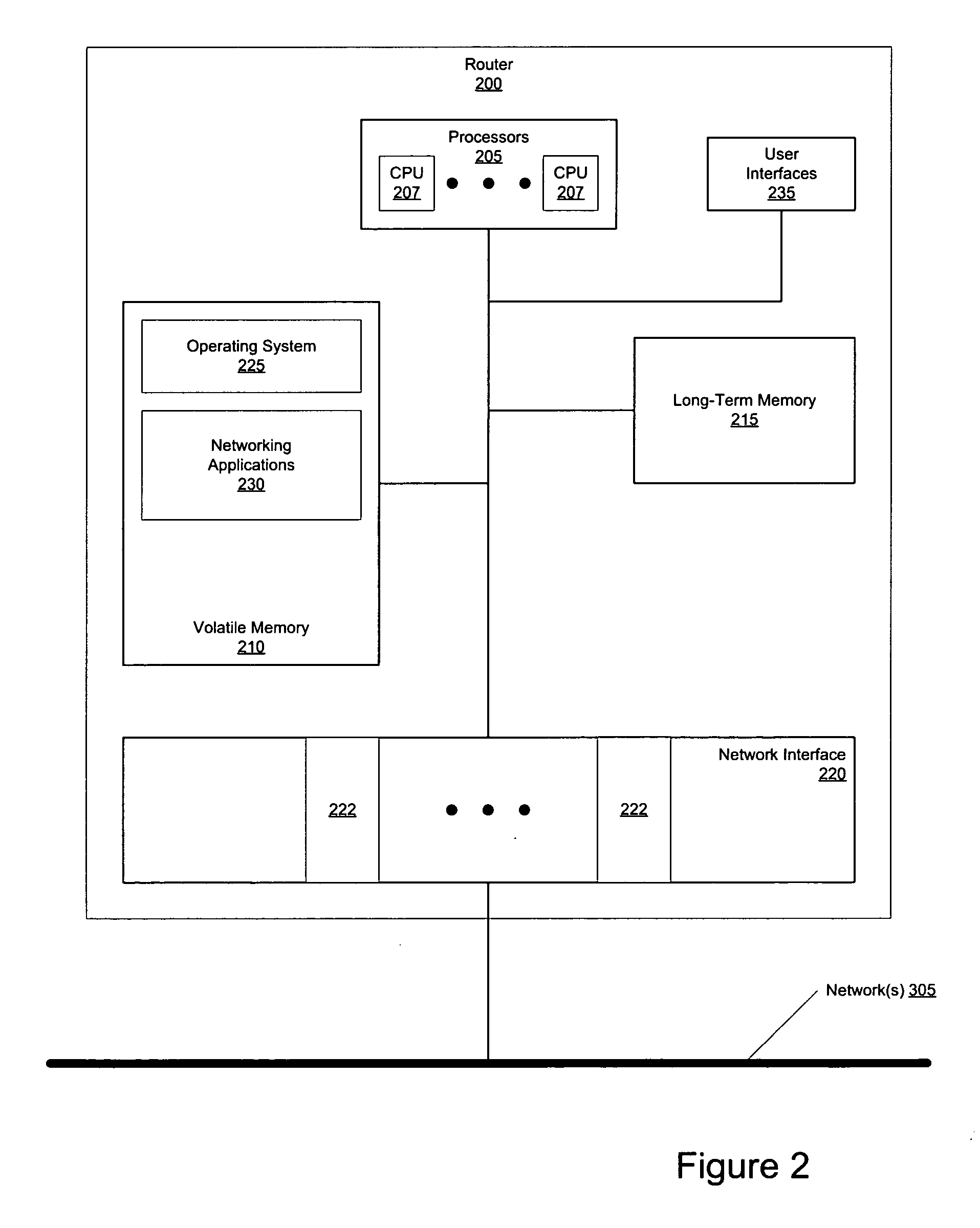System and method for efficient sftorage and processing of IPV6 addresses
a technology of ipv6 addresses and efficient sftorage, applied in the field of system and method for efficient sftorage and processing of ipv6 addresses, can solve the problems of increasing the amount of memory needed to implement a routing table in a router, affecting the performance of the router, etc., to achieve the effect of eliminating compression information
- Summary
- Abstract
- Description
- Claims
- Application Information
AI Technical Summary
Benefits of technology
Problems solved by technology
Method used
Image
Examples
Embodiment Construction
[0030] In preferred embodiments according to the present invention, a method and system may be implemented that reduces the amount of space needed to accommodate routing of IPv6 formatted data packets. In the preferred embodiment, IPv6 addresses are compressed according to a predetermined format, and may then be stored in, for example, a routing table or link state database of a router device for purposes of determining routing paths for IP data packets received by the device. Received IPv6 data packets may be compared to entries in the routing table without decompression of the IPv6 address data in the table. Use of the compressed IPv6 addresses thereby reduces the amount of space required for storing routing tables and similar networking data structures, without appreciable increase (and in most cases, actually a decrease) in the amount of processing required to perform actions such as IPv6 address lookup for packet forwarding.
[0031] The preferred embodiments according to the pre...
PUM
 Login to View More
Login to View More Abstract
Description
Claims
Application Information
 Login to View More
Login to View More - R&D
- Intellectual Property
- Life Sciences
- Materials
- Tech Scout
- Unparalleled Data Quality
- Higher Quality Content
- 60% Fewer Hallucinations
Browse by: Latest US Patents, China's latest patents, Technical Efficacy Thesaurus, Application Domain, Technology Topic, Popular Technical Reports.
© 2025 PatSnap. All rights reserved.Legal|Privacy policy|Modern Slavery Act Transparency Statement|Sitemap|About US| Contact US: help@patsnap.com



